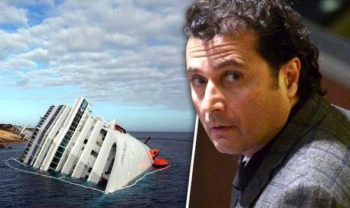
What is the worst thing that can possibly happen to you in your profession? How have you prepared for this eventuality, both technically and psychologically, so that you don’t go to pieces in extremis?
If you are a master mariner, it is difficult not to put yourself in the position of Captain Francesco Schettino, as his ship’s systems died in front of his eyes following the contact with the rock off the Isle of Giglio on that fateful evening in January 2012. How, you might ask, would I have coped in the terrifying knowledge that my ship was holed, flooding, out of control and that my decisions could lead several thousand people to a watery grave?
Throughout your career, aboard every ship you have sailed in, you have undertaken drill after drill, dutifully practising mustering passengers, regularly lowering lifeboats, even undertaking “desktop” damage control exercises. In more recent years, you will have spent time on simulators. But in the back of your mind, you may well have thought, as you watched the passengers being instructed in the use of their lifejackets, or the boats sent away on a smooth harbour exercise, that such drills barely scratched the surface of what “could”, just possibly, happen. And even if you had a fertile imagination, you would have probably put to the back of your mind any scenario which would have matched the frightful reality of the situation on Costa Concordia, onthat awful night.
Could you remain rational and a fully functional individual as the ship drifted, listed, lost all electrical power? Could you take all the right decisions, at the time they were needed, as the terrible messages of a worsening situation flooded in, as the sea filled her compartments?
It might be argued that those in charge of the gigantic cruise ships, some of which now have more than 7,000 souls aboard, have responsibilities unlike those faced by anyone else on land, sea or air. They are trained along, with their crews, to minimise risks, to preventawful things happening. But before January 2012, was the training sufficient?
In the armed forces, training is prolonged, intensive and is designed to ensure that only the most capable reach high command. Those in charge of major warships will have faced the most searching examinations of their professionalism, with drills that really are horribly realistic, involving simulated battle damage and mass casualties, to ensure that they can cope with the worst case scenarios.
By contrast, those in commercial shipping know that they cannot require hundreds of passengers, including the old and infirm, to board boats and rafts in the middle of a cruise they have paid to enjoy. They cannot fill the accommodation with mock smoke or extinguish all the electrics, just to provide a realistic emergency drill. You do the best you can, and hope for the best.
Is all this an effort to promote sympathy for Francesco Schettino, as, all appeals against the master’s 16 year gaol sentence have failed and he is now a prisoner? There were 32 people who lost their lives in this significant marine casualty and their relatives want to see justice done. But there are questions about this case which will not go away, despite the assurances from operators that lessons have been learned and precautions to prevent any repetition put in place.
And it is difficult to consider it fair that whatever the master’s failings, he alone should suffer so disproportionately for mistakes made that evening. After all, there was a bridge “team” operating the ship, and an organisation which did not function as it ought to have done. And in any reasonable system of justice, there is a difference between errors of judgement and wilful, criminal negligence. And with his ship in its death throes, it is worth recalling that her master was a human being and not a robot.